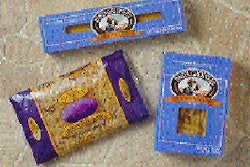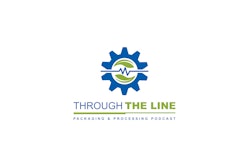Small over-the-counter drug manufacturers fear they will be swamped by new packaging costs if the Food and Drug Administration (FDA) pushes forward with its proposal to require all two-piece, hard-gelatin OTC capsules to be sealed. The major over-the-counter makers support sealing, but are concerned about other facets of the proposal: a requirement to use the term "tamper evident" on package labels, and a two-year deadline to recall all non-sealed capsules. The FDA currently requires two-piece hard-gel capsule packages to employ a minimum of two tamper-resistant technologies. These can include: film wrappers, blister or strip packs, bubble packs, heat shrink bands or wrappers, foil pouches, container mouth inner seals, and a number of protective measures. Capsule sealing is not required. In its January 1994 proposal, the FDA recommended that sealing be mandatory. The package would also have to have an additional tamper-resistant feature. Howard Muller, an official in the division of regulatory affairs within FDA's Center for Drug Evaluation and Research, says a draft final rule is circulating within the agency. He declines to elaborate on its contents. At press time, that draft had not yet reached the office of Janet Woodcock, the director of the Center. Once she approves a rule, it would need the signature of either David Kessler, commissioner of the FDA, or William Hubbarb, the interim deputy commissioner. There is no timetable for the rule to be finalized. Effect on tampering? No one really believes that the FDA final rule-whatever it contains-will be the death knell for tampering. Hugh Lockhart, a professor at Michigan State University's School of packaging, says packaging "needs a great deal of improvement if the packages are to function adequately for tamper evidence." Moreover, Lockhart notes that it is often fairly easy for a tamperer to repair any evidence of his crime. Even when tampering is obvious, the public rarely notices it. "Some people say this is a social problem to which there is no engineering solution," notes Lockhart. The Nonprescription Drug Manufacturers Association (NDMA), whose members account for over 90% of the OTC drugs sold in the U.S., supports mandatory capsule sealing. The FDA believes that 38 of the 50 products currently on the market are already sealed. However, smaller companies want only to seal the fate of the FDA proposal. "The proposed rule to band all OTC drugs in two-piece hard-gelatin capsules places an unfair burden on manufacturers of these products without really solving the problem of tampering," says Peter Finkle, director of quality assurance at Yerba Prima, a 15-employee company that markets about 30 products mostly to health food stores. Those products include a fiber laxative. The Sudafed tragedy The crying need for more public education was reflected by the 1991 Sudafed poisonings resulting from the substitution of bogus capsules laced with cyanide into a legitimate package. Two people in the state of Washington died, and another became gravely ill. That package had been manufactured in compliance with current FDA rules. Nonetheless, the tampering was obvious. The counterfeit capsules were larger than the other legitimate Sudafed capsules, and the fakes did not have the Sudafed logo on them. The foil backing on the package's blister card had been cut. The distinctive blue gelatin band around the capsules was missing. In the aftermath of the incident, the FDA considered banning two-piece, hard-gelatin capsules. But their benefits-easy to take, the only form that can be used for certain medicines, contain fewer inactive ingredients-convinced the agency to look first at reducing the chances that capsules could be tampered with. Deadlines from FDA The January 1994 FDA proposal called for a two-year deadline after the rule became final for retail pharmacies to clear their shelves of non-sealed capsules, the so-called retail effective date. Manufacturers would have one year after the rule came out to stop manufacturing non-sealed capsules. "A retail effective date would be disruptive, and provide no demonstrable public health protection," says William Bradley, director of technical affairs for the NDMA. "We urge FDA to abandon the retail level effective date and to establish a single effective date of one year following publication of a final rule." Keeping the two-year deadline would play havoc with the distribution chain, the NDMA argues. Drug stores would have to figure out which capsules were unsealed. Some drug stores might return all capsules, just to make things easier. Other marketers might incorrectly return one-piece capsules. Alerting consumers The FDA also wants companies to take the term "tamper-resistant" off product labels and replace it with "tamper evident." The idea is that the second term would better communicate to consumers the need for them to examine a package before using capsules. The FDA believes the words "tamper-resistant" create a false sense of security in the minds of buyers, encouraging them to believe that the package could not have been tampered with. Manufacturers would have two years to change their labels. But the NDMA's Bradley argues, "We know of no evidence to suggest that including either the words 'tamper-resistant' or 'tamper-evident' has any measurable effect on how consumers might respond to the labeling describing the packaging feature." In the economic analysis that accompanied the proposed rule, the FDA calculated that there are only about 50 OTC products on the market that would be affected by this rule, and that 75 to 90% were already sealed. Finkle of Yerba Prima disputes that estimate. He says he is aware of more than 22 OTC products currently marketed in unsealed, two-piece hard-gelatin capsules. "The actual number is probably at least twice as many," he adds. Identifying dosages OTC capsule manufacturers-including those in all forms, not just two-piece, hard-gel-are already struggling with the added costs imposed by the FDA's product tablet and capsule imprinting regulation, which goes into effect in September 1995. Both prescription and OTC drugs-all solid forms-will need identification numbers on each tablet or capsule. That rule will increase the price of medication about 20 to 40¢ per bottle, according to Finkle. The sealing requirement would add an additional $1 to $2 per bottle, he estimates. The FDA's estimate was more modest: 50 to 80¢ per 100ꯠ capsules. Some drug industry officials believe that an FDA sealing requirement would migrate voluntarily to other product categories. Finkle argues the rule would have a major impact on vitamins and other supplements. There may be thousands of those products sold in two-piece, hard-gel capsules. "If these products were to be sealed, either by an extension of this FDA proposed rule or by legal and product liability concerns of dietary supplement manufacturers, the economic impact on the hundreds of companies involved and the American public would be huge," Finkle asserts. Rules to spread? Derek Hall, president of Nature's Way, a leading marketer of dietary supplements, says he has already seen the writing not on the wall, but "on the Federal Register," where new rules are published. His company will purchase a "belly banding" machine for $350ꯠ in 1995. He estimates that 80% of the company's 400 products are hard shells. Some of those are OTC drugs, such as Nature's Way's cold care line. "Pressure from customers and retailers is what convinced us to seal our capsules," he states. The American Society of Hospital Pharmacists (ASHP) has been pressuring the FDA to reconsider its regulatory exclusion of other dosage forms, including dermatologicals, from tamper-evident packaging requirements. In its written request, the ASHP acknowledged that it was "somewhat outside the purview of the current rulemaking." The NDMA jumped on that admission. Eve Bachrach, vice president and associate general counsel for the NDMA, says the FDA would have to publish another proposal before the agency could consider extending the sealing proposal to other product categories. There would be no basis to do so anyway, she emphasizes. The first FDA rule on tamper-resistant packaging, issued in 1982 in the wake of the extra-strength Tylenol poisonings in Chicago, excluded dermatologics, dentifrices, insulin and throat lozenges because of the lower probability of tampering and/or the less severe consequences from tampering with these products than with those that are ingested, inserted, inhaled, or intended for ophthalmic use. "NDMA is aware of no data in the 12 years since the regulation was promulgated to contradict FDA's conclusion," Bachrach states. Obviously, there is a lot of conjecture that won't be solved until the FDA final rule is published. And no matter what it contains, certain segments of the pharmaceutical business will face new costs. It's possible that the new Congress, considered more pro-business, could legislate that FDA rules not yet in force would be judged on a risk-assessment basis (see Rules & Regs, p. 10). Eval-uated through that "filter," capsule sealing and changes in tamper-evident packaging might not appear worth the investment.



























